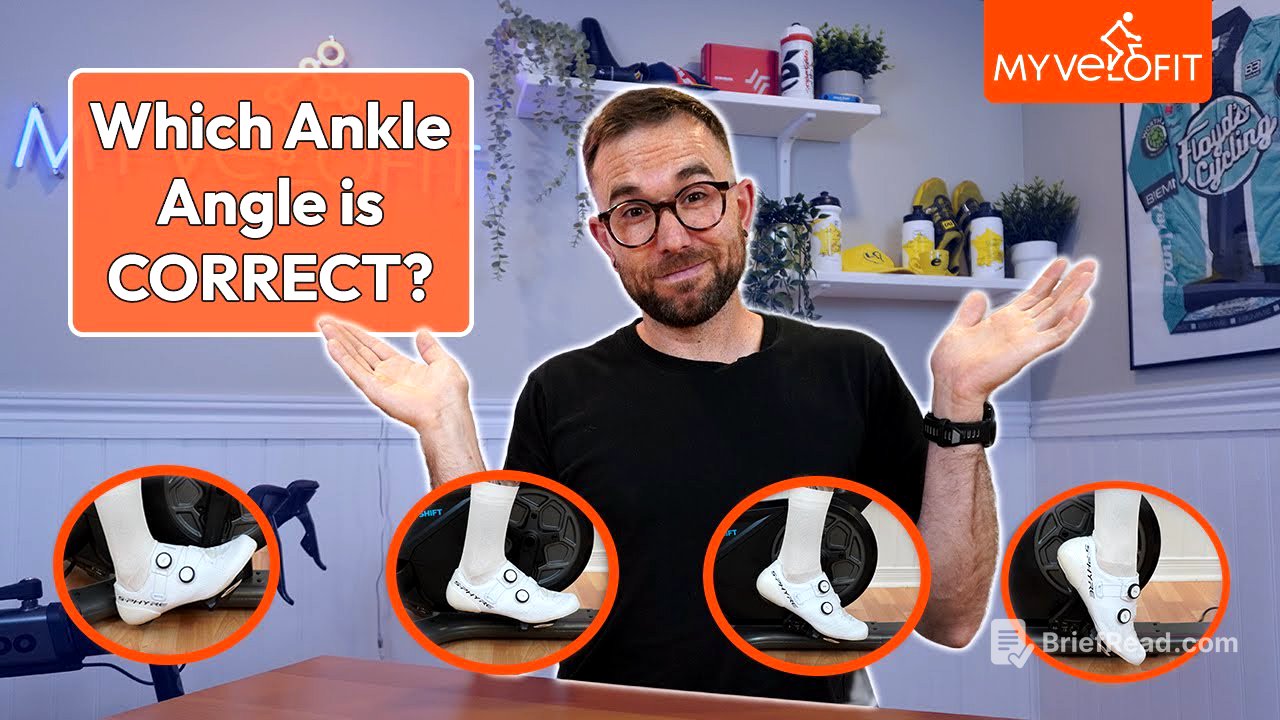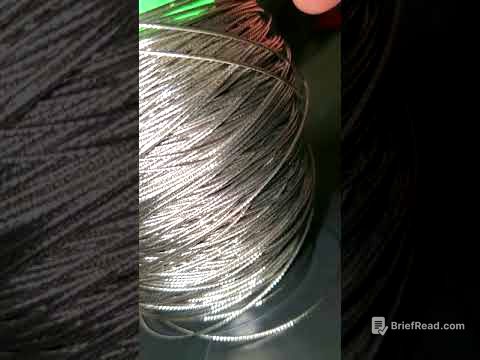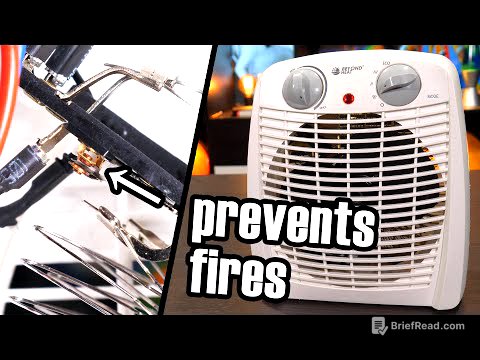TLDR;
This video addresses the common concerns and misconceptions about ankle angle and ankling in bike fitting. It clarifies that there's no single perfect ankle angle and that some degree of ankling is normal. However, the video also explains when extreme ankle angles or changes in ankling can indicate fit issues, such as incorrect saddle height or cleat position, and offers guidance on how to address these issues.
- There is no perfect ankle angle.
- Ankling is normal.
- Extremes can indicate fit issues.
Introduction [0:00]
The video introduces the topic of ankle angle and ankling in bike fitting, aiming to clarify its importance and address common misconceptions. It promises to break down what's right, what's wrong, when to be concerned, and what actions to take regarding ankle angle and ankling.
Understanding Ankling [0:34]
Ankling involves two main components: ankle angle, which refers to the degree of plantar flexion (toe-down position) at the bottom of the pedal stroke, and the dynamic change in ankle angle throughout the pedal stroke. A high degree of ankling involves a significant change from toe-down to heel-down positions, while minimal ankling maintains a more consistent foot angle. These two aspects are related but provide different insights into a rider's pedal stroke.
Normalcy of Ankling and Individual Variation [1:31]
There is no ideal ankle angle, and some degree of ankling during the pedal stroke is normal. Riders should not try to force their foot into a specific angle. Individual pedal strokes vary, with some riders naturally more toe-down and others flatter-footed. Personal biomechanics and comfort should dictate foot position, rather than trying to conform to a perceived "correct" angle. A heel-down position doesn't automatically mean the saddle is too low, nor does a toe-down position mean it's too high.
When Ankling Indicates Fit Issues [3:29]
Ankling or ankle angle can indicate fit problems, particularly when riders reach through the bottom of the pedal stroke due to a saddle that is too high. While some ankle movement is normal, excessive reaching indicates the knee is at the end of its functional range, forcing the ankle to compensate. This is often accompanied by hip drop, and together these signs suggest the saddle height is excessive, leading to a loss of control in the pedal stroke.
Ankle Compensation After Saddle Height Adjustment [5:09]
When lowering a saddle that has been too high for a long time, riders often compensate at the ankle to maintain a familiar knee extension angle. As the saddle is lowered, the knee angle may not change initially, with the ankle angle adjusting instead, such as the heel dropping. This indicates the body is protecting the knee angle. Solutions include making gradual adjustments to allow the body to adapt or a "shock approach" of drastically lowering the saddle to break the compensation pattern before raising it again to the desired height.
Cleat Position and Ankling [7:57]
Ankle angle and ankling can indicate cleat position issues. A very pointed toe position may suggest the cleats are too far forward, creating instability that riders compensate for by pointing their toes. Similarly, excessive ankling, with significant heel drop, can also result from cleats positioned too far forward, requiring excessive foot muscle control. Adjusting the cleat position, generally towards a more rearward placement, can help resolve these issues.
Ankling in Aggressive Riding Positions [9:26]
In aggressive riding positions, such as on a time trial or triathlon bike, a more plantar flexed (toe-down) ankle position is common and expected. This is because the rider's position is rotated around the bottom bracket, changing their relationship with the pedals and naturally pointing the toe more. This adjustment is normal and not a cause for concern in these specific riding positions.
Conclusion [10:36]
Ankle angle and ankling are personal and depend on riding position. Obsessing over them is not productive, but extremes can indicate issues with cleat placement or saddle height. Observing ankle angle during saddle height adjustments can show if the body is adapting. Don't panic about ankle angle; focus on enjoying the ride.









